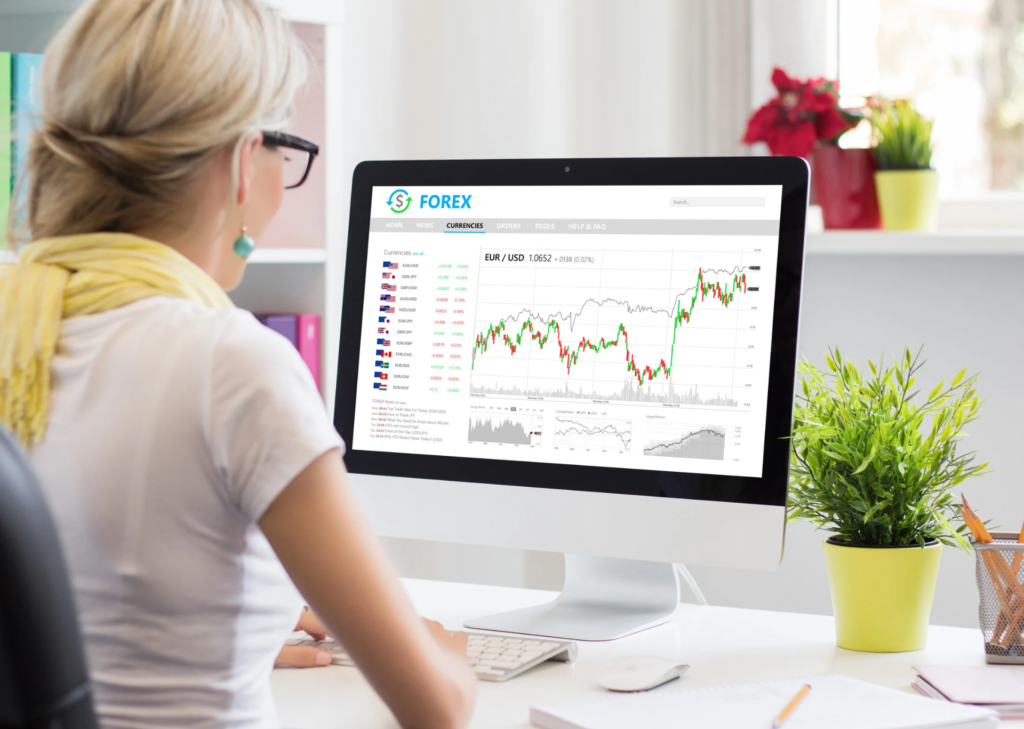Online trading involves purchasing and selling assets and securities on digital platforms like online brokerages or trading platforms.
The act of purchasing and selling financial instruments, commodities, or other assets using digital platforms—often the Internet—is referred to as online trading. Online brokerages or trading platforms are common names for these services. Individuals now have easier access to financial markets thanks to online trading, where a variety of assets and securities are traded.
Assets that may be traded online include:
1.Stocks: Ownership shares in a publicly traded business. Stocks are bought and sold by investors in the hopes of making money via dividends and capital growth.
2.Forex (foreign exchange): Trading in different currencies. The largest and most liquid financial market, which is open every day of the year, is the currency market.
3.Options: Financial agreements that grant the holder the right—but not the obligation—to purchase or dispose of an underlying asset at a given price and prior to a certain date.
4.Futures: Financial agreements that obligate either the buyer or the seller to buy or sell a particular item at a specific future time and price.
5.Exchange-Traded Funds (ETFs): Investment funds that trade on an exchange like stocks and hold a variety of securities. Through a single purchase, ETFs give investors access to a range of assets or marketplaces.
6.Bonds: Debt securities that have been issued by businesses or governments to raise money. Bond purchasers become bondholders and are paid interest.
7.Cryptocurrencies, such as Bitcoin and Ethereum, are digital or virtual money that function on decentralized networks and use encryption for security.
8.Commodities are tangible goods sold in standardized contracts, such as:
- Metals (e.g., gold, silver, platinum, and copper)
- Energy (e.g., crude oil, natural gas, and gasoline)
- Agricultural products (e.g., corn, wheat, soybeans, and coffee)
- Livestock (e.g., live cattle, lean hogs, and feeder cattle)
Process of trading online:
1. Pick an online broker: Do your homework and choose a reliable online brokerage platform that provides the resources and trading capabilities you require.
2. Open an account by completing an application and supplying the required paperwork to prove your identification and financial standing.
3. Deposit money: Use a bank transfer, credit/debit card, or one of the platform’s other approved payment methods to add money to your trading account.
4.Become familiar with the platform: Get to know the trading interface, available tools, and features.
5. Create a trading strategy by researching market patterns, conducting technical and fundamental analysis, and figuring out when to enter and exit transactions. Find out more trading tactics here.
6.Place orders: Use the tools provided by the platform to place orders of all stripes, such as market orders, limit orders, stop orders, and others.
7. Manage your risk exposure and track the performance of your transactions while keeping an eye on your money.
8. Withdraw profits: Deposit your winnings into a bank account or reinvest them after leaving your trading account.
Advice for traders of all experience levels:
1. Become knowledgeable about risk management strategies, market analysis, and trading strategies.
2. Begin with a demo account: Before risking real money, practice trading with virtual money to develop experience and boost confidence.
3. Create a trading strategy and plan to help you make decisions. Include your objectives, risk tolerance, and trading approach.
4. Diversify your portfolio to lower risk by distributing your investments across several markets and assets.
5. Employ position sizing, stop-loss orders, and other risk management tools to safeguard your capital.
6.Control your emotions: Practice restraint and abstain from making snap judgments motivated by greed or fear.
7. Monitor your progress: Keep an eye on your results, learn from any blunders, and keep improving your trading strategy.
8.Remain informed: To keep up with market events and trends, follow financial news, economic reports, and other pertinent sources.
9.Exchange knowledge and experiences with other traders via local meetups, online forums, and social media groups.
10. Seek professional guidance: For individualized direction and support, think about engaging with a mentor or financial counselor.
11.Persevere and learn: Trading success often takes time. Expect failures and learn from them.
12.Stay current with trading platforms, tools, and trends to improve your skills.
13.Adjust your trading plan based on results, risk tolerance, and market conditions.
14.Set boundaries, take breaks, and pursue non-trading hobbies to maintain a work-life balance.
This will help you avoid overtrading and manage stress.You can advance from a beginner trader to an experienced trader by adhering to these recommendations and steadily enhancing your abilities and knowledge. Keep in mind that there are no guarantees of success in trading due to the inherent dangers involved. However, you can improve your odds of succeeding in your trading goals with commitment, perseverance, and the appropriate strategy.












